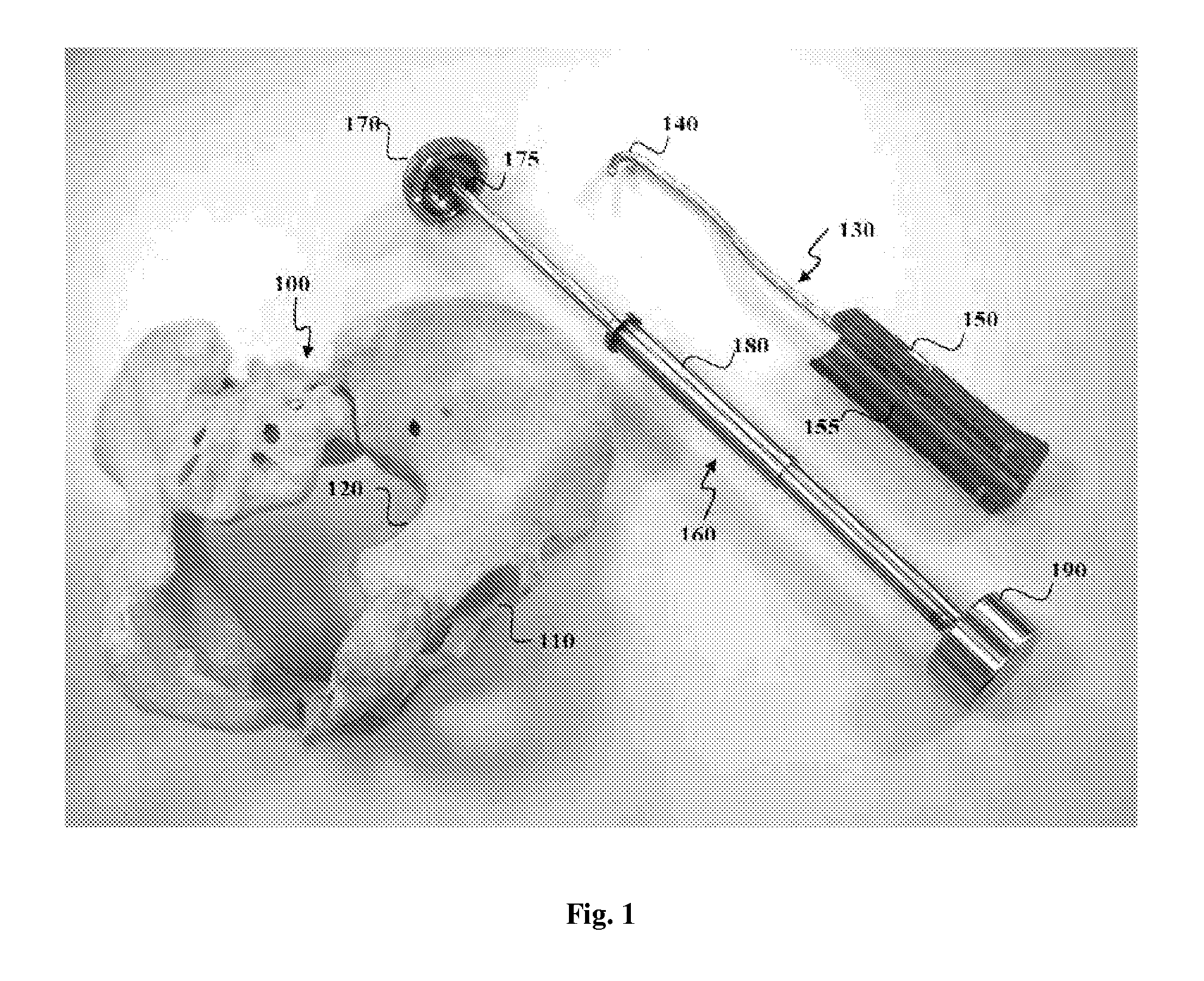Self Retaining Acetabular Component Alignment Device for Total Hip Arthroplasty
- Summary
- Abstract
- Description
- Claims
- Application Information
AI Technical Summary
Benefits of technology
Problems solved by technology
Method used
Image
Examples
Embodiment Construction
[0023]The invention is an alignment device used to guide the placement of the acetabular component during total hip arthroplasty. The device comprises a first longitudinal element (sometimes referred to as an alignment hook or aligner), and a second longitudinal element (sometimes referred to as the insertion rod or the impaction device) with an acetabular component at the distal end, as shown in FIG. 1. The pelvis 100 shows the relevant bony locations, acetabulum or acetabular inlet or the socket 110 and the sciatic notch 120. The aligner 130 has a curved portion or a hook 140 at its distal end and a handle 150 at its proximal end. The insertion rod 160 has the acetabular component 170 attached at its distal end, a thicker mid-section 180 and a flattened section 190 at its proximal end. The proximal end of the insertion rod is designed for impaction with a mallet and can take many shapes. The acetabular component 170 is coupled to the distal end 175 such that the acetabular compone...
PUM
 Login to View More
Login to View More Abstract
Description
Claims
Application Information
 Login to View More
Login to View More - R&D
- Intellectual Property
- Life Sciences
- Materials
- Tech Scout
- Unparalleled Data Quality
- Higher Quality Content
- 60% Fewer Hallucinations
Browse by: Latest US Patents, China's latest patents, Technical Efficacy Thesaurus, Application Domain, Technology Topic, Popular Technical Reports.
© 2025 PatSnap. All rights reserved.Legal|Privacy policy|Modern Slavery Act Transparency Statement|Sitemap|About US| Contact US: help@patsnap.com



